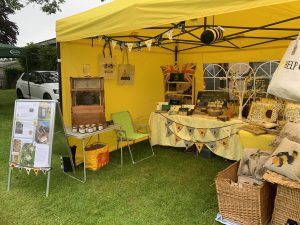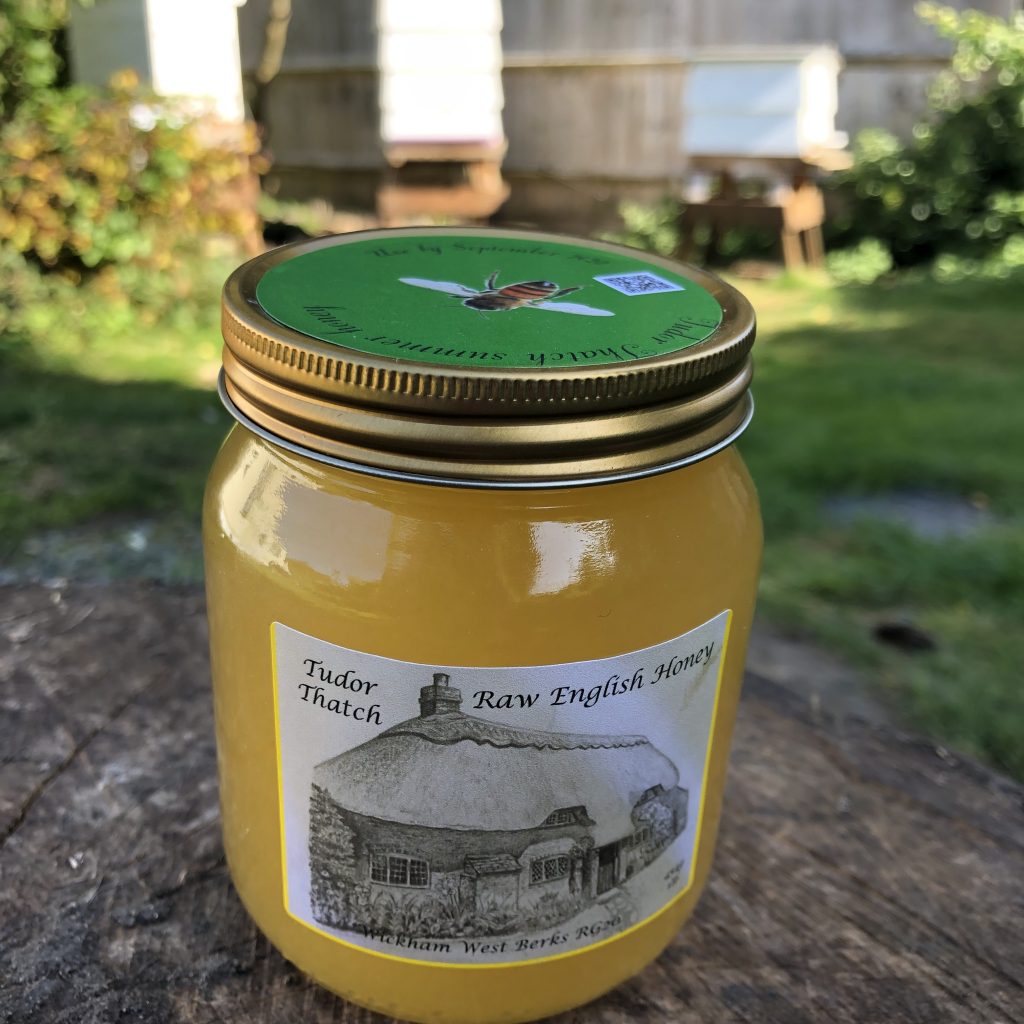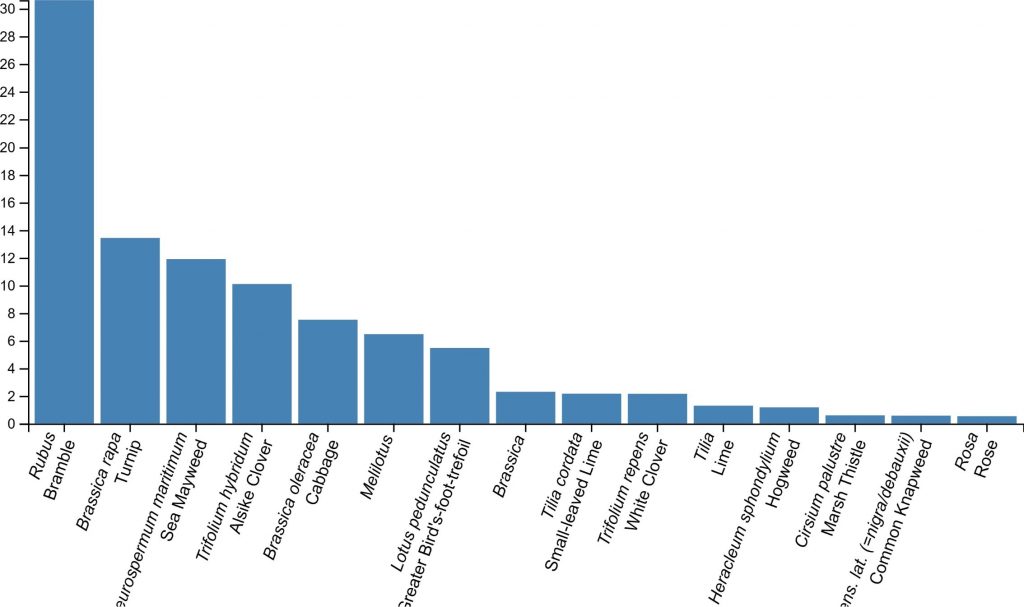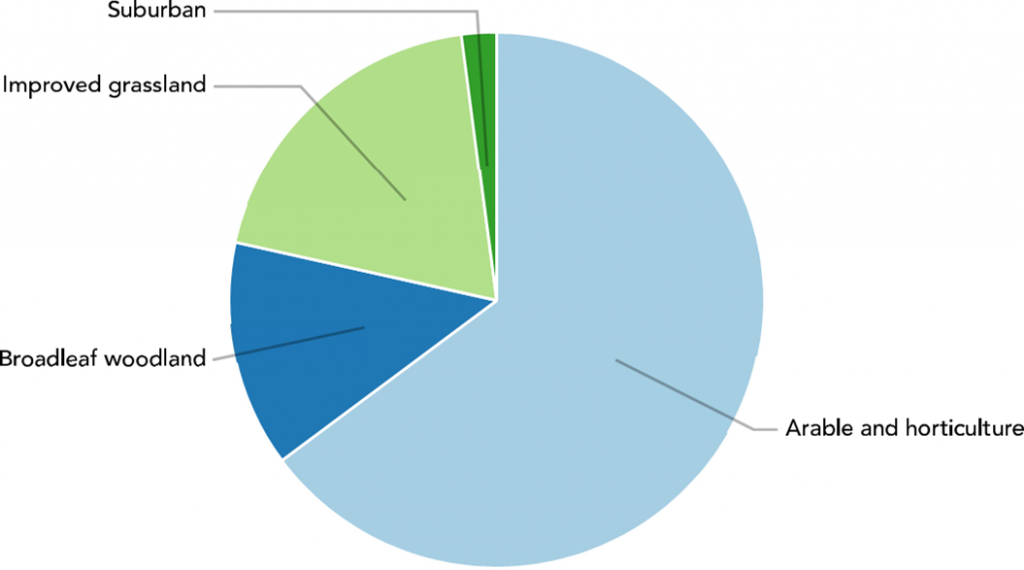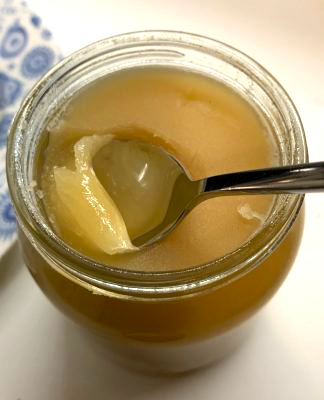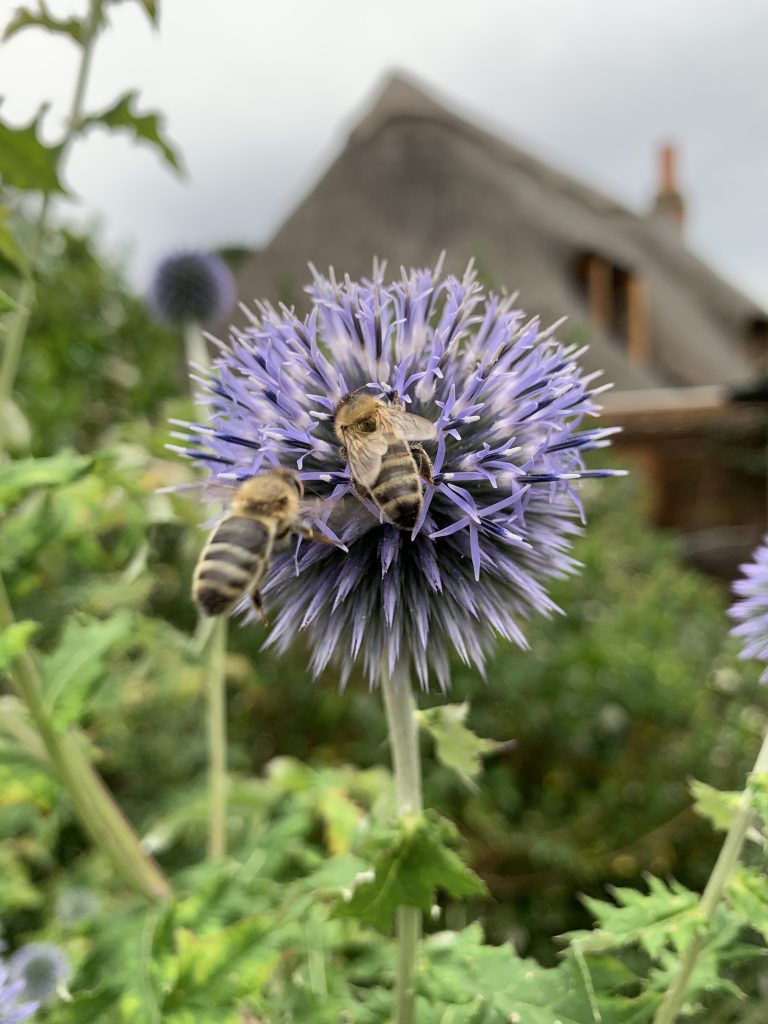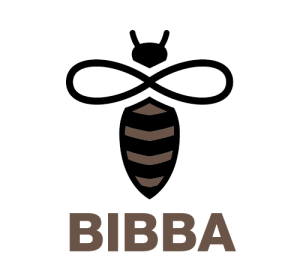Honey
Why Do Bees Make Honey?
Honey bees are special in that they overwinter as a colony, unlike wasps and bumblebees. The colony does not hibernate but stays active and clusters together to stay warm. This requires a lot of food, which is stored during the summer. Although a hive only needs 20-30 lb of honey to survive an average winter, the bees are capable of collecting much more, if given storage space. This is what the beekeeper wants them to do.
Bees have been producing honey in the same way for over one hundred and fifty million years
How Much Honey Can One Beehive Produce?
One hive can produce 60 lb (27 kg) or more in a good season, however an average hive would be around 25 lb (11 kg) surplus, some years less and some much more.
Bees fly about 55,000 miles to make just one pound of honey, that’s 2.2 times around the world. Romans used honey instead of gold to pay their taxes.
How Do We Get The Honey From The Bees?
The queen bee is kept below the upper boxes (called ‘supers’) in the hive by a wire or plastic grid (called a ‘queen excluder’), which the queen is too large to fit through, we like to use double brood boxes to give the queen loads of space and also so the bees can store plenty off honey below ready for winter. As the bees cannot raise brood above the queen excluder, only honey is stored in the supers. As the season progresses we adds more supers until its time to harvest the honey. In West Berkshire we usually have two harvests per year.
A special one-way valve is then fitted in place of the queen excluder and gradually all the bees move into the lowest part of the hive. We can then lift off the ‘super’ boxes containing the honey comb. The honey is extracted from the comb using centrifugal force in a machine called an extractor, which looks like an old-fashioned upright spin dryer.
Do The Bees Miss The Honey That Is Taken?
No. A strong colony can produce 2-3 times more honey than it needs. Not all beekeeping is equal, at Tudor Thatch we believe in leaving the bees with enough of their own honey for an average winter, if the winter is particularly cold and long we can feed fondant after xmas to make sure they don’t starve. It’s important to remember in nature honeybees are constantly under attack for there honey and many colonies are robbed to extinction, beekeeping is a mutual partnership and we make sure the bees don’t starve.
Why Are Some Types Of Honey Clear And Runny And Other Types Opaque And Hard?
The type of honey made by the bees is dependent on the types of foliage and flowers available to the bees. Crops such as oil seed rape (the bright yellow fields in the spring) produce large quantities of honey that sets hard, very quickly, garden flowers tend to give a clear liquid honey. If the beekeeper wants to produce a mono-floral honey, e.g. pure clover, orange blossom, etc, the beehive is put out of range from other floral sources. In the autumn, some beekeepers move their hives onto the moors to harvest the nectar from wild heather. Heather honey is thought to be the king of honeys and has a clear jelly consistency. Our honey is usually either multi-floral or from crops like oilseed rape, this mean our honey is produced from very local forage and is true to the area.
How Do Bees Make Honey?
The secret with honey is what the bees add to it and how they convert it, bees take nectar, which is a sweet sticky substance exuded by most flowers and some insects (honeydew), and mix it with enzymes from glands in their mouths. This nectar/enzyme mix is stored in hexagonal wax honey comb until the water content has been reduced to around 17%. When this level is reached, the cell is capped over with a thin layer of wax to seal it until the bees need it. This capping indicates to the beekeeper that the honey can be harvested. Capped honey can keep almost indefinitely. Sucrose (nectar) + invertase (bee enzyme) = fructose + glucose the main sugars in honey although there are a few others like maltose and many others minor constituents like pollen. Perfectly edible honey comb was found in the tombs of the Pharaohs, over three thousand years old. How’s that for ‘Best Before Dates’.
Does Honey Contain Additives?
Unfortunately there is a lot of mass-produced adulterated honey around at the moment. The most prevalent problems include:
- dilution with different syrups
- harvesting immature honey
- using ion-exchange resins to lighten colour
- mis-labelling origin
If you buy your honey direct from a local producer in the UK, these problems shouldn’t exist. It should have it’s source clearly labelled and be in its ‘raw’ form i.e nothing added to it, simply filtered to remove the comb and wax after spinning. At Tudor Thatch we do not heat treat out honey which we feel is best, the healthy enzymes in honey are delicate and damaged by heating to high temperatures for instance during pasteurization
Melissopalynology
Melissopalynology is the study of pollen in honey. It originates from the Greek, Melisso for honey and Palynology for study of small particles. Palynology is a very established science, allowing the vegetative landscape over millions of years to be analysed through the pollen extracted from soil samples. However, it is not just limited to analysis of historical landscapes, it is equally applied to our modern-day environment, for example in solving criminal cases or predicting hay fever levels
